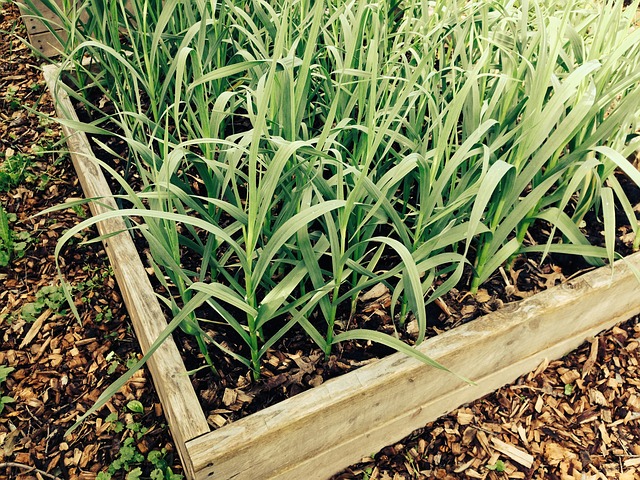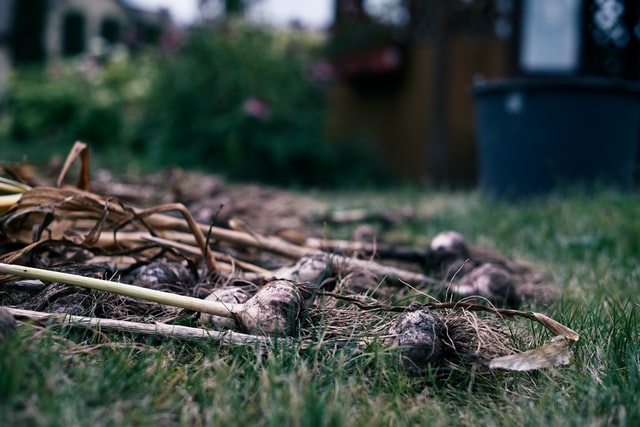Garlic is a useful plant to have in the kitchen. It can be used to add flavor to food or to make a meal more filling. Garlic can also be used as a natural remedy for many common ailments. There are many benefits to including garlic in your diet. Growing garlic is easy and does not require a lot of space. Garlic can be grown in most climates and soils. Garlic growing stages include a few specific stages, which I’ll discuss in the next section.
Garlic is a member of the onion family. It is related to shallots, leeks, and chives. Garlic is thought to have originated in Central Asia. It has been used for centuries in many different cultures for its unique flavor and health benefits. Garlic is a multipurpose space that you may use in various meals. It can be chopped, minced, or roasted. You can use garlic to flavor soups, stews, sauces, and marinades. It is also a popular seasoning for meat and vegetables.
Garlic has been shown to boost the immune system, fight off infections, and even help to lower blood pressure. Garlic is also a natural anti-inflammatory agent, making it helpful in the treatment of arthritis and other inflammatory conditions.
Garlic Growing Stages
Garlic is a member of the onion family, Allium. The onion, shallot, leek, chive, and Chinese onion are all relatives of garlic. Garlic is from Central Asia and northeastern Iran and has long been a common seasoning worldwide. It was known to the Ancient Egyptians and has been used as a food flavoring and traditional medicine. Garlic is easy to grow and can be cultivated in any climate that supports onions. Garlic grows best in loose, well-drained soils with high organic content. Here are the garlic growing stages:

Germination:
Germination is the process by which a plant grows from a seed. Garlic needs two things: water and warmth to germinate. The cloves will sit in water for a few days until they start to sprout. Once they have sprouted, you can plant them in soil. Garlic is like well-drained, loose soil that is high in organic matter. It also needs full sun and moderate temperatures. Once planted, the cloves will begin to grow roots and leaves.
The roots will help the plant anchor itself in the soil, while the leaves will produce food for the plant through photosynthesis. With proper care, garlic will continue to grow and produce bulbs that can be harvested and eaten. Germination is essential for growing garlic; understanding it can help you grow healthy and successful plants.
Green or Spring Garlic:
Green garlic, also known as spring garlic, is a variety of garlic harvested before the cloves have had a chance to mature. Green garlic has a milder flavor than mature cloves and can be used in much the same way as other types of garlic. When cooking with green garlic, it is important to use it sparingly, as its flavor can quickly become overpowering. Green garlic can be found in many supermarkets but is relatively easy to grow at home.
To grow green garlic, plant cloves in well-drained soil in the fall. The plants will emerge early in the spring, and you can harvest the bulbs after about six weeks. Green garlic can be stored in the refrigerator for up to a week, making it a convenient product to have on hand for use in recipes.
Scapes:
Scapes are the garlic equivalent of onion tops. They are long, thin, and curved and emerge from the bulbs before the cloves mature. Scapes can be harvested, eaten fresh, pickled, or used in other preserved products. Scapes will eventually form flowers that produce seeds when left on the plant. You can plant these seeds to grow new garlic plants.
You can harvest scapes as soon as they appear. To do this, simply cut them off at the base of the plant with a sharp knife. Scapes can be used fresh in salads or cooked like other greens.
Young Bulbs:
Young bulbs of garlic are some of the kitchen’s most flavorful and versatile ingredients. They can be used in various dishes, from simple roasted garlic to complex sauces and soups. Bulbs of garlic are also a great way to add flavor to pasta dishes, pizzas, and stews. When shopping for garlic, look for bulbs that are plump and firm. Avoid those that are faded or have signs of mold.
You should store young garlic bulbs in a cool, dark place until they are ready to be used. Once peeled, they can be stored in the refrigerator for up to two weeks. When cooking with garlic, always use fresh bulbs for the best flavor. If you need to store them for longer periods, you can freeze them whole or in chopped form.

Mature Bulbs:
Mature garlic bulbs are the type of garlic that is most commonly used in cooking. The cloves are fully developed and have a strong flavor that can add a lot of depth to a dish. Mature garlic bulbs can be roasted, sautéed, or used in any other way you would use fresh garlic. They can also be dried or pickled for longer-term storage.
To harvest mature garlic bulbs, simply wait until the plants have died back and the tops of the bulbs are dry. Then, carefully dig up the bulbs and brush off any excess dirt. You can store mature garlic bulbs in a cool, dry place for up to several months.
Flowering Stage:
The garlic plant will eventually produce a flower stalk or scape. The scape is the garlic equivalent of an onion top, which emerges from the bulb before the cloves mature. The scape can be harvested and eaten fresh, or it can be pickled or used in other preserved products. When left on the plant, the scape will eventually form a flower that produces seeds. You can plant these seeds to grow new garlic plants.
Wrapping Up:
Garlic can be found in various dishes since it is quite versatile. It is important to know the different stages of garlic so that you can choose the best type for your recipe. Green garlic, scapes, and young bulbs are all good choices for recipes that call for a milder flavor, while mature bulbs are best for recipes that need a more assertive flavor. Use it sparingly, no matter what type of garlic you choose, so it doesn’t overpower your dish. Thanks for reading!
